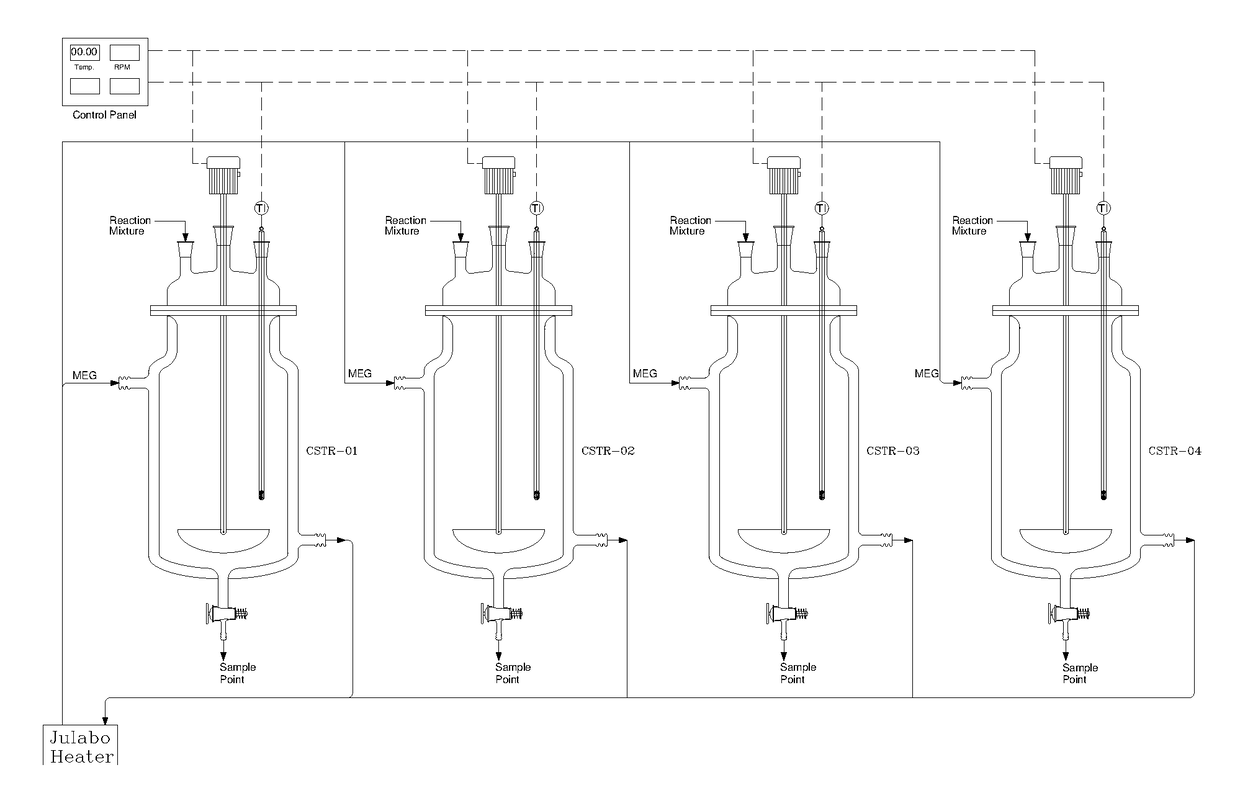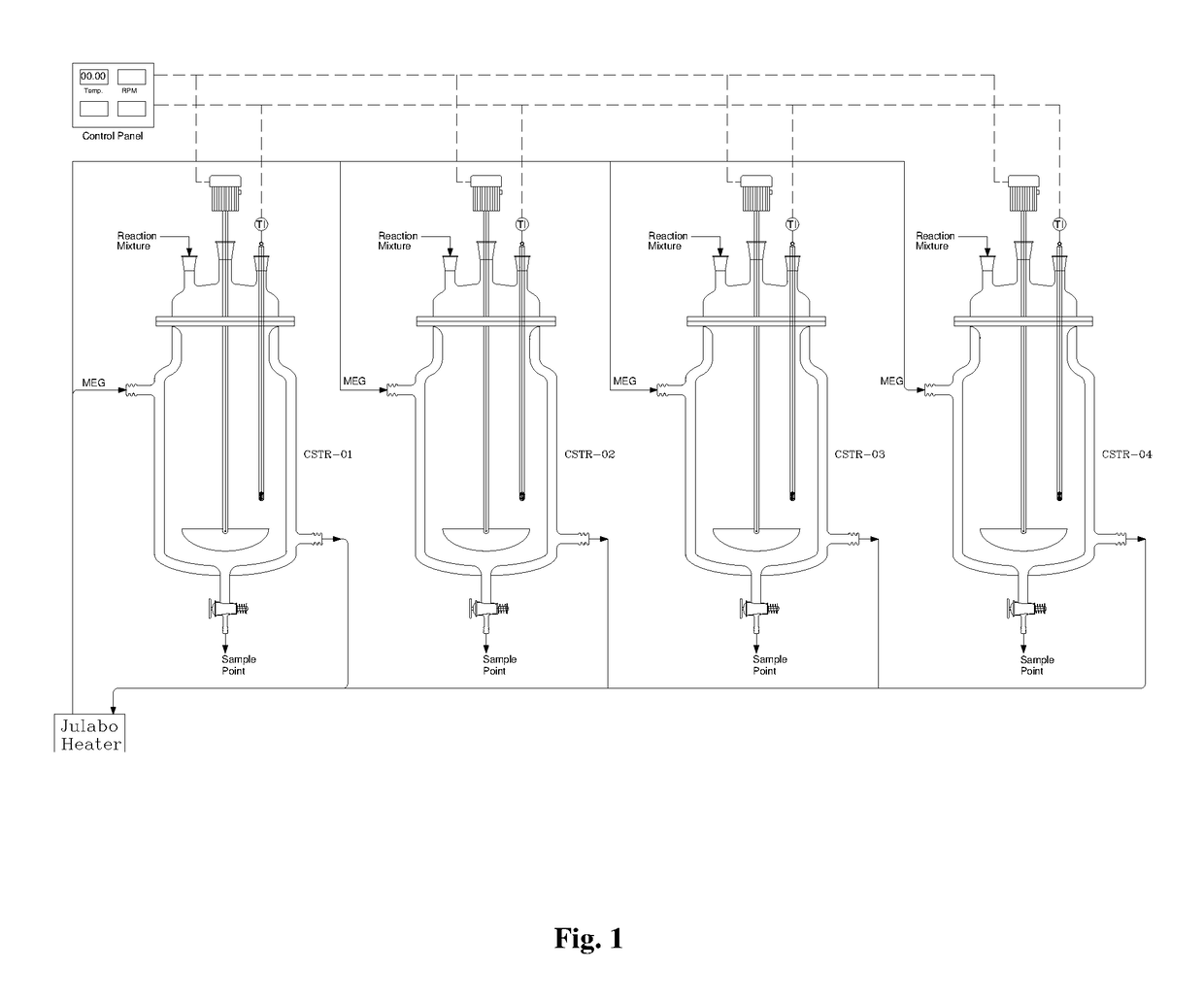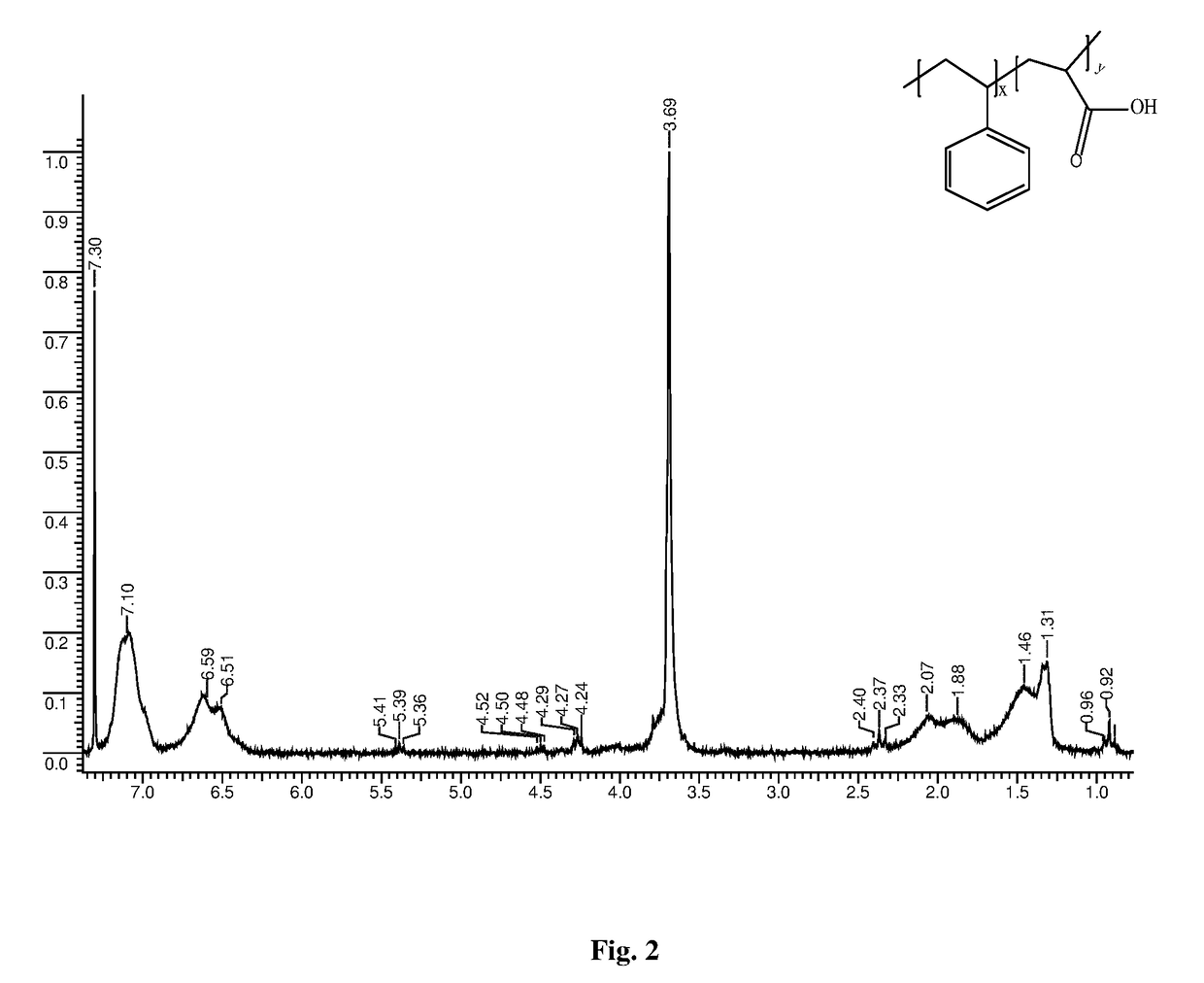Demulsifiers for Separation of Water from Oil and Preparation Thereof
- Summary
- Abstract
- Description
- Claims
- Application Information
AI Technical Summary
Benefits of technology
Problems solved by technology
Method used
Image
Examples
example 1
a) Synthesis of Low Temperature Demulsifier LTD Using Emulsion Polymerization
[0046]The various batches for synthesis of low temperature demulsifier i.e. co-polymer are done by varying the percentage of styrene and sodium acrylate (SA), styrene-disodium fumarate and styrene-4-vinyl pyridine from ratio 5:95 to 50:50 percent weight. The reaction composition and conditions are given in Table I, II and III.
1) Preparation of co-polymer using styrene and sodium acrylate (Table: I)
2) Preparation of co-polymer using styrene and sodium fumarate (Table: II)
3) Preparation of co-polymer using styrene and 4-vinyl pyridine (Table: III)
b) Experimental Procedure of Synthesis of Low Temperature Demulsifier (LTD)
[0047]The low temperature demulsifier was synthesized in a 1 L stirred reactors connected in parallel. The temperature and speed of agitation was monitored with help of PID controller and speed controller respectively. The experimental setup diagram was shown in FIG. 1. The polymer was prepare...
example 2
a) Effect of Monomer Ratio on Demulsification of Crude Oil
[0074]The effect of monomer ratios (sodium acrylate and styrene, sodium fumarate and styrene, 4-vinyl pyridine and styrene) on yield of co-polymer as well as demulsification crude oil was studied. The monomers ratio was varied from 5:95 to 50:50. The effect of monomer ratios on demulsification of actual crude oil received from the platform of ONGC located in Western offshore, India are given in Table VII and IX respectively. From these Tables it was observed that the monomers ratio has certain effect on the rate of demulsification.
b) Effect of Time on Demulsification Crude Oil
[0075]The time required for demulsification of crude oil on offshore is very important. Generally it is expected that the time required for the demulsification process should be in the range of 3-6 min. Table X shows the effect of time on demulsification of actual crude oil received from platform of ONGC located in Western offshore. From this Table X, it...
example 3
[0079]ONGC has provided crude oil sample from production manifold of offshore process platform located in Western offshore was utilized for testing of various developed low temperature demulsifiers. The performance of developed low temperature demulsifier was tested by using simulated crude oil emulsion as well as using actual crude oil emulsion supplied by ONGC from its Western offshore. The effect of various operating conditions like demulsification temperature, curing time and demulsifier dose on the demulsification of crude has been studied. The detailed results pertaining on demulsification of crude oil using various developed low temperature demulsifiers at laboratory testing as well as offshore testing are given below:
a) Laboratory Testing of Low Temperature Demulsifier (LTD) Using Simulated ONGC Crude Oil:
[0080]Initially the performance of developed low temperature demulsifier was tested by using crude oil received from offshore platform of ONGC located Western offshore, cru...
PUM
| Property | Measurement | Unit |
|---|---|---|
| Temperature | aaaaa | aaaaa |
| Fraction | aaaaa | aaaaa |
| Fraction | aaaaa | aaaaa |
Abstract
Description
Claims
Application Information
 Login to View More
Login to View More - R&D
- Intellectual Property
- Life Sciences
- Materials
- Tech Scout
- Unparalleled Data Quality
- Higher Quality Content
- 60% Fewer Hallucinations
Browse by: Latest US Patents, China's latest patents, Technical Efficacy Thesaurus, Application Domain, Technology Topic, Popular Technical Reports.
© 2025 PatSnap. All rights reserved.Legal|Privacy policy|Modern Slavery Act Transparency Statement|Sitemap|About US| Contact US: help@patsnap.com



